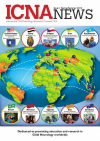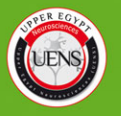- Details
- ICNA
- News
- Hits: 612
 The next few years will be exciting for the ICNA and its members. In the current report we move away from activities in Europe (for now) and cover the ICNA meeting in Uganda on “Children with Epilepsy”, the build-up to the imminent Brisbane ICNC and address the next ICNC in 2014 which will be in Brazil.
The next few years will be exciting for the ICNA and its members. In the current report we move away from activities in Europe (for now) and cover the ICNA meeting in Uganda on “Children with Epilepsy”, the build-up to the imminent Brisbane ICNC and address the next ICNC in 2014 which will be in Brazil.
This Newsletter is timed to come out just before the 12th ICNC in Brisbane. In future, editions will continue to be mid-year and towards the end of the year, or just prior to major meetings. The ICNA AGM agenda is available in this edition included, it itemises one of the important proposals for the membership to vote on, namely that of whether the association should move to free membership! The board discussed this and voted in favour of the proposal but the final decision will lie with the membership - read on if you want to know more.
A number of bursaries and awards will be received at the 12th ICNC in Brisbane - these are summarised in this issue.
Crossing the globe further the dynamic Pratibha Singhi continues her work in her country and has provided a report on the meeting on “Childhood Epilepsy in Office Practice” in India which she was part of.
Enjoy this issue - please remember to send me suggestions of topics you would like included and any interesting photos. Also any brave vignettes you would share with the readers.
Jo Wilmshurst
Editor
Read More
- Details
- ICNA
- News
- Hits: 670
In a study published in the Annals of Neurology, researchers at Georgetown University Medical Center (GUMC) report that the anti-epilepsy drug phenobarbital given to rat pups about a week old changed the way the animals' brains were wired, causing cognitive abnormalities later in life. The results provide the first evidence that exposure to antiepileptic drugs during a sensitive postnatal period impairs physiological maturation of synapses in neurons that survive the initial drug insult.
Using patch-clamp recordings to examine functional synaptic maturation in striatal medium spiny neurons from neonatal rats exposed to antiepileptic drugs with proapoptotic action (phenobarbital, phenytoin, lamotrigine) and without proapoptotic action (levetiracetam). Phenobarbital-exposed rats were also assessed for reversal learning at weaning.
Synaptic maturation was absent in rats exposed at P7 to a single dose of phenobarbital, phenytoin, or lamotrigine, but not levetiracetam. Interestingly melatonin pretreatment which prevents drug induced neurodevelopmental apoptosis, prevented this disruption in maturation.
The study raises new questions about using phenobarbitone as the first-line drug to treat epilepsy in neonates.
Citation: Forcelli, P. A., Janssen, M. J., Vicini, S. and Gale, K. (2012), Neonatal exposure to antiepileptic drugs disrupts striatal synaptic development. Ann Neurol.. doi: 10.1002/ana.23600 [abstract]
Read More
- Details
- ICNA
- News
- Hits: 844
 1st Upper Egypt Neuroscience September 12-13, 2012
1st Upper Egypt Neuroscience September 12-13, 2012
Pyramisa Blue Lagoon, Hurghada
Only 116 days to Go
Reasons to Book Now
With more than 40 key persons, over 30 oral presentations, teaching sessions and special interest groups happening during the 2 days of the conference, you don't want to miss out on this congress of 1st Upper Egypt Neuroscience, in Collaboration with Upper Egypt Universities.
Very spectacular and interesting scientific sessions with our Neurology, Neurosurgery, Psychiatry & Pediatric Neurology colleagues from the all Egypt with a warm social activities, how can Neuropsychiatrists meet together ?. What's new in Neuroscience ?
To register for 1st Upper Egypt Neuroscience, 2012 please visit the following link: http://www.cme-group.net
Important dates : Early registration deadline : 15/07/2012
Abstract submission deadline : 15/07/2012
Accommodation Deadline : 01/08/2012 Late registration deadline : 15/08/2012
Onsite registration : after 15/08/2012
Prof. Amal Tawfik Prof. of Neurology, Menia University
President of the Conference
Ahmed Raouf, MD.
General Secretary of the Conference & Society
Prof. Of Pediatrics & Pediatric Neurology and Neuro- Rehabilitation, ARRC
Consultant of Pediatric Neurology, IPGCS EB
Member of International Child Neurology Association ( ICNA )
Vice - President of African Pediatric Neurology Association ( APNA )
+2 0100 142 6669
Read More
- Details
- ICNA
- News
- Hits: 833
 1st Upper Egypt Neuroscience September 12-13, 2012
1st Upper Egypt Neuroscience September 12-13, 2012
Pyramisa Blue Lagoon, Hurghada
Only 116 days to Go
Reasons to Book Now
With more than 40 key persons, over 30 oral presentations, teaching sessions and special interest groups happening during the 2 days of the conference, you don't want to miss out on this congress of 1st Upper Egypt Neuroscience, in Collaboration with Upper Egypt Universities.
Very spectacular and interesting scientific sessions with our Neurology, Neurosurgery, Psychiatry & Pediatric Neurology colleagues from the all Egypt with a warm social activities, how can Neuropsychiatrists meet together ?. What's new in Neuroscience ?
To register for 1st Upper Egypt Neuroscience, 2012 please visit the following link: http://www.cme-group.net
Important dates : Early registration deadline : 15/07/2012
Abstract submission deadline : 15/07/2012
Accommodation Deadline : 01/08/2012 Late registration deadline : 15/08/2012
Onsite registration : after 15/08/2012
Prof. Amal Tawfik Prof. of Neurology, Menia University
President of the Conference
Ahmed Raouf, MD.
General Secretary of the Conference & Society
Prof. Of Pediatrics & Pediatric Neurology and Neuro- Rehabilitation, ARRC
Consultant of Pediatric Neurology, IPGCS EB
Member of International Child Neurology Association ( ICNA )
Vice - President of African Pediatric Neurology Association ( APNA )
+2 0100 142 6669
Read More
- Details
- ICNA
- News
- Hits: 647
The Child Neurology Society ( USA ) is now accepting applications for the 2012 Bernard D’Souza International Fellowship Award, which will sponsor all expenses for a child neurologist from a developing country to attend the 41st Annual Meeting of the CNS to be held in Huntington Beach, California, from October 31-November 3, 2012.
This will be preceded, or followed, by a visit to a selected training program in North America. The purpose of the award is to promote child neurology in developing countries. Applicants must have trained in a developing country, should be practicing child neurology in an academic environment in a developing country and should be prepared to present a scientific paper in English.
Preference will be shown to applicants less than age 45 years. The deadline for receipt of applications for the award is May 15, 2012. The application and complete selection criteria can be obtained by contacting:
Agustin Legido, MD
Chair, International Affairs Committee
Child Neurology Society
St. Christopher’s Hospital for Children
Section of Neurology
Erie Ave and Front Street
Philadelphia, PA 19134
Telephone: 215 427 5452;
Fax: 215 427 4393 E-mail: This email address is being protected from spambots. You need JavaScript enabled to view it.
Source: The Child Neurology Society. The ICNA is not affiliated to the Child Neurology Society. All enquiries regarding the award should be directed to the Child Neurology Society at the address above.
Read More